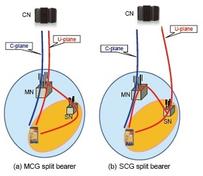5G Throughput: Downlink and Uplink Explained
Advertisement
This page describes the 5G throughput test case, its test procedure, and the minimum conformance requirements for both downlink and uplink scenarios.
The 5G throughput in the downlink refers to the data rate from the 5G New Radio Node B (5G-NB) to the User Equipment (UE). Conversely, in the uplink, it refers to the data rate from the UE to the 5G-NB.
What is Throughput?
- The term “throughput” refers to the ratio of data transmitted per unit of time.
- The unit of throughput is bits per second (bps).
- Maximum Throughput is the highest rate at which data can be transmitted through the network connection at a given layer of the OSI stack.
- Network operators are benchmarking data rates of up to 20 Gbps in the downlink and 10 Gbps in the uplink in the initial rollouts planned for the next few years. Ericsson demonstrated a throughput of 5.7 Gbps in India in November 2017.
5G Downlink Throughput
- This test case is used to verify the DL Physical Layer’s capability to process xPDSCH (extended Physical Downlink Shared Channel) sustainably.
- The test verifies that the maximum number of DL-SCH (Downlink Shared Channel) transport block bits are decoded correctly and delivered to upper layers.
The following table presents an overview of the 5G downlink throughput test case:

The following are the minimum conformance requirements in the downlink throughput test case:
- Both the UE and 5G-NB successfully complete RRC setup via system access procedures.
- The 5G-NB transmits xPDCCH (extended Physical Downlink Control Channel) to schedule xPDSCH to a specific UE with beams acquired during the initial access procedure.
- The UE searches and decodes the relevant DCI (Downlink Control Information) in xPDCCH. It receives/decodes the corresponding xPDSCH after completing synchronization (time/frequency/power) with the help of PSS/SSS/ESS (Primary/Secondary/Early Synchronization Signals) and obtaining system information from xPBCH (extended Physical Broadcast Channel).
- The UE provides feedback information (ACK/NACK) to the 5G-NB for received transport blocks.
- The 5G-NB retransmits erroneous transport blocks based on the feedback received from the UE.

5G Uplink Throughput
The following table provides an overview of the 5G uplink throughput test case:

The following are the xPUSCH (extended Physical Uplink Shared Channel) test parameters used in the test case:

For more comprehensive information on the complete 5G throughput test procedure, refer to the 5GTF Test Plan for Air Interface PDF document.
5G NR Throughput Calculator

Advertisement
 RF
RF



